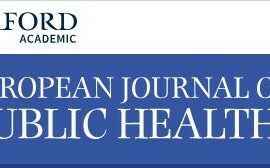
Romaní Vidal Adriana, Vaughan Aisling, Innocenti Francesco, Colombe Soledad, Nerlander Lina, Rachwal Natalia et al.
Eurosurveillance, Volume 27, Issue 31, 04 August 2022 2022. https://doi.org/10.2807/1560-7917.ES.2022.27.31.2200483
Abstract
Following the report of an excess in paediatric cases of severe acute hepatitis of unknown aetiology by the United Kingdom (UK) on 5 April 2022, 427 cases were reported from 20 countries in the World Health Organization European Region to the European Surveillance System TESSy from 1 January 2022 to 16 June 2022. Here, we analysed demographic, epidemiological, clinical and microbiological data available in TESSy. Of the reported cases, 77.3% were 5 years or younger and 53.5% had a positive test for adenovirus, 10.4% had a positive RT-PCR for SARS-CoV-2 and 10.3% were coinfected with both pathogens. Cases with adenovirus infections were significantly more likely to be admitted to intensive care or high-dependency units (OR = 2.11; 95% CI: 1.18–3.74) and transplanted (OR = 3.36; 95% CI: 1.19–9.55) than cases with a negative test result for adenovirus, but this was no longer observed when looking at this association separately between the UK and other countries. Aetiological studies are needed to ascertain if adenovirus plays a role in this possible emergence of hepatitis cases in children and, if confirmed, the mechanisms that could be involved.


